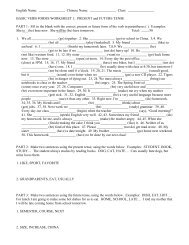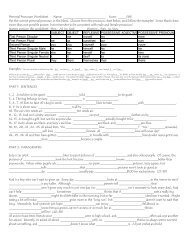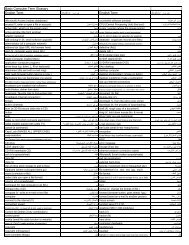Presidential Candidate Viability & Partisan Online ... - Omnifoo.info
Presidential Candidate Viability & Partisan Online ... - Omnifoo.info
Presidential Candidate Viability & Partisan Online ... - Omnifoo.info
You also want an ePaper? Increase the reach of your titles
YUMPU automatically turns print PDFs into web optimized ePapers that Google loves.
Research Questions and Hypotheses. On what basis do mass media and smaller online sources<br />
choose to cover aspiring presidential candidates a lot, a little, or not at all? Must s/he be newsworthy, deemed<br />
viable by the public or editorial board, aligned ideologically with the particular source or audience? This study<br />
seeks to show a difference in the amount of mass media coverage received by presidential primary candidates,<br />
based on the partisanship and medium (including the target audiences) of the sources. Many candidates,<br />
especially those behind in the polls, have made claims that mass media largely ignore their campaigns, with<br />
the implications that the media have a responsibility to cover each candidate approximately evenly and that<br />
failure to do so essentially condemns their campaigns to obscurity. According to expectations laid out (and<br />
lamented) in Patterson’s Out of Order, we can expect candidates embroiled in scandals to receive more<br />
coverage in non-partisan news media, while sources concerned entirely with deeper political issues and<br />
policies will pay more attention to less “flashy” candidates with more substantive policy prescriptions. The<br />
2012 Republican primaries, as well as third parties in the 2008 elections, offer several examples of candidates<br />
whose marginal campaigns were made or—far more often—broken by how much media coverage they<br />
received. 12<br />
While it is expected that primary candidates’ coverage will align approximately with their polling<br />
numbers preceding the election 13 , many differences can be predicted. Besides differences in the ability to<br />
capture media attention for being an intriguing (or gaffe-prone) candidate, we can make any number of<br />
dichotomous candidate categorizations beyond the apparently most relevant liberal and conservative:<br />
establishment versus outsider, pretty face versus policy wonk, rousing speaker and debater versus coolheaded<br />
calculator, etc. are all in play in the pre-distant phase when the primary electorate is just beginning to<br />
familiarize itself with the available options. We should expect mass media or “mainstream” news outlets to<br />
pay more attention to certain candidates than bloggers or pundits, and outlets for “hard” and “soft” news<br />
12 Of course, differences in how candidates were covered, positively or negatively, is presumed to be more significant, past a certain<br />
threshold. Again, however, this study is more concerned with candidates who fail to reach this point, attempts to use other media to<br />
compensate.<br />
13 As will be described further in the following section, candidates often rise and fall in polls during the pre-distant phase, so when<br />
considering the amount of media coverage given to their campaigns it is important to keep a broad temporal scope rather than single<br />
day, week, or month which is likely to coincide with a particular candidate’s upswing or peak.<br />
6






